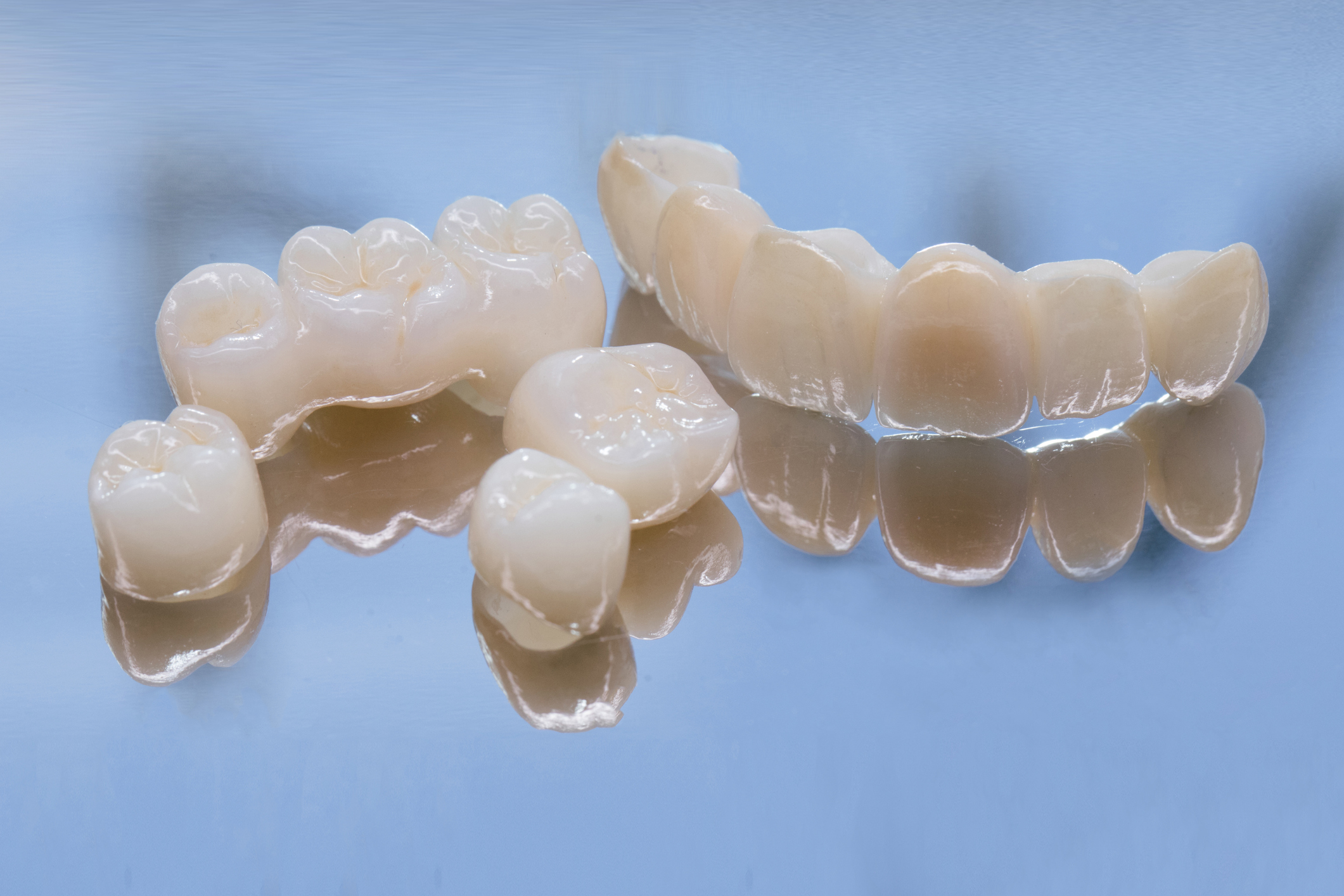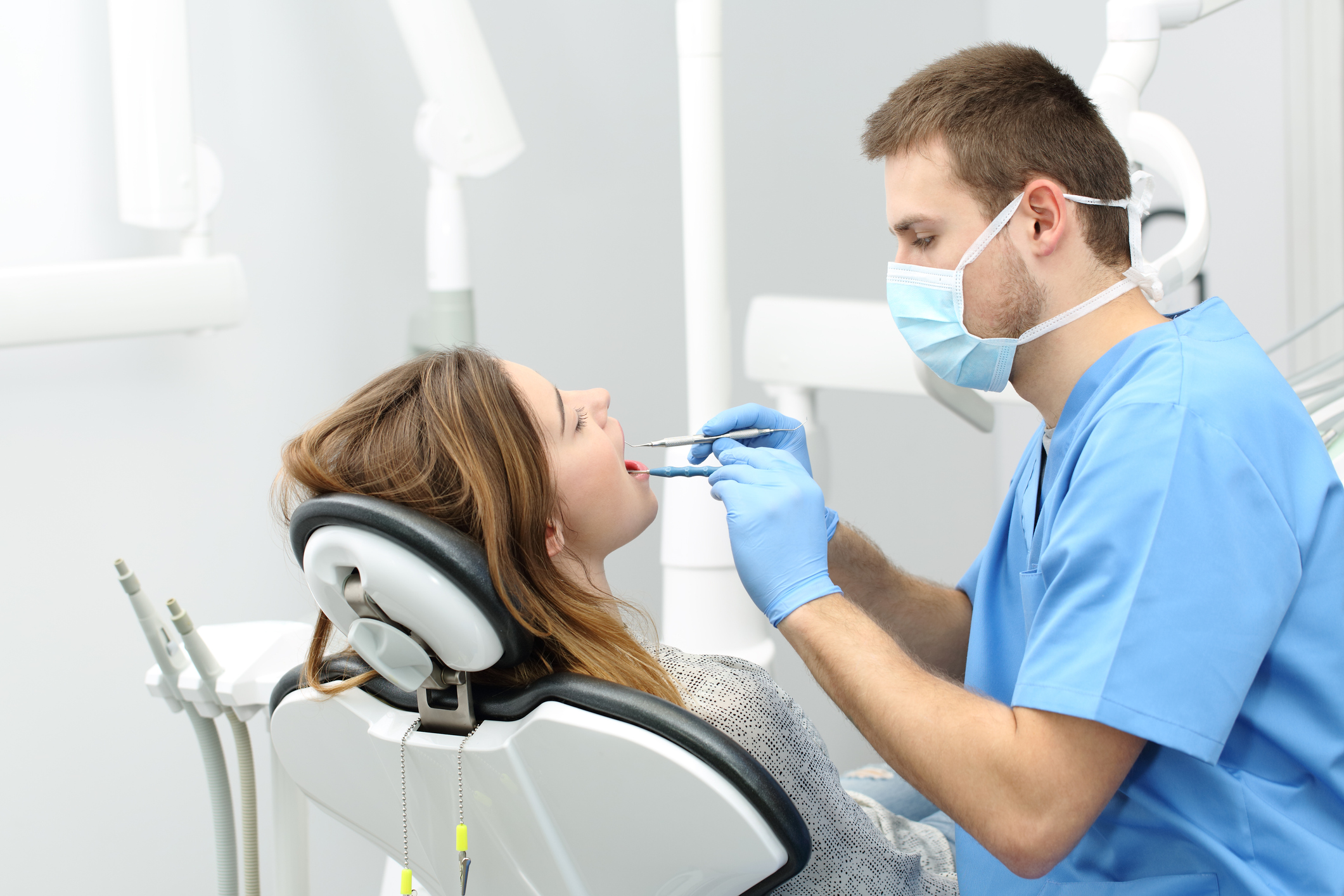For any teeth that need a full restoration, beyond that which can be achieved with a filling alone, we can use crowns or bridges. Made to look just like natural teeth, crowns provide a full restoration for any teeth that are letting your smile down. If you need to replace a tooth or fill in a gap, crowns can be used in a bridge to support a false tooth between them.
What are crowns?
We can use crowns in a variety of different ways. The most common use is to restore the appearance of a damaged tooth. We can also use crowns to support a bridge or to fit on top of an implant in order to replace a missing tooth. Made from a variety of materials, natural-looking crowns blend perfectly with the rest of your teeth and provide long-lasting protection for the remaining structure of the tooth. When placed on a natural tooth, a layer of the tooth has to be removed to create a post. The crown then fits over the post, fully restoring the appearance.
What are bridges?
A longer-lasting alternative to dentures, dental bridges are an effective way to replace one or more missing teeth. They consist of a false tooth, positioned between two crowns, which slot over the teeth either side of a gap (known as abutment teeth) or they can be held in place by dental implants. They are usually made from porcelain fused to a metal or ceramic base, to offer a blend of strength and good looks.

How is a tooth prepared for a crown?
Having a crown involves two main steps. The first is preparation. We use a local anaesthetic to numb the area first. If you have a cavity or any decay caused by bacteria, we’ll treat the tooth to make sure that only the healthy tooth remains. It doesn’t take long for us to strip away a layer of the tooth. Once we have the post prepared, we take impressions of the tooth so we can create a crown that blends in perfectly with the surrounding teeth. Don’t worry, we’ll provide you with a temporary bridge or crown so any prepared teeth are well protected.
Having the crown or bridge made
Whether your crown or bridge is fitting onto posts or implants, the process is the same. We use moulds to create accurate models of your teeth. These are then sent to a dental lab where they are crafted using the latest dental technology. Your crown or bridge is then sent back to us. When you come back to us for the fitting, we’ll make sure that the colour matches perfectly and that it blends in. We then fix it in place with dental cement.
Looking after your new crown or bridge
The best way to care for your new teeth is to stay on top of your oral hygiene – this means keeping your teeth and gums healthy by brushing with a fluoride toothpaste twice a day and flossing between your teeth. You also need to see your dentist regularly for check-ups so they can keep an eye on your crown or bridge and the tooth underneath.

Frequently Asked Question
The best way to look after your crown is to keep your teeth and gums healthy, including brushing and flossing twice a day. It is also important to keep up with your regular check up appointments so your dentist can keep an eye on your crown and the tooth underneath.
A dental crown is not permanent, and will need replacing or repairing due to natural wear and tear at some point after it is fitted. Most people find their crown lasts for around 10-15 years before needing attention. However, the treatment process itself is irreversible due to the need to remove some of your natural tooth enamel, so a replacement crown will always need to be fitted.
Having dental crown treatment is not painful. We use local anaesthetic to numb the area around your tooth and minimise your discomfort during treatment. We also make sure you are feeling relaxed in the dentist chair before we begin. Many patients report that having a crown is no more uncomfortable than a standard filling.
Your crown may become stained over time, but the level of discolouration is less severe than in your natural teeth. This is more likely if you consume a lot of dark or strong coloured food or drink, including tea, coffee, red wine or curry, or are a smoker. Teeth whitening treatments are not effective on dental restorations such as crowns, so it may appear darker than your other teeth if you have undergone whitening treatment.

